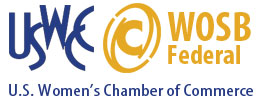
What Do Employees Want from Employers?
Employment is a mutual contract between employers and employees, but often, the focus skews heavily toward what the employer expects. In today’s job market, it’s more important than ever for employers to consider what employees want and need from their workplace.
Treating employees well isn’t just about ethics—it’s also a smart business strategy. A satisfied workforce leads to lower turnover, higher productivity, and a reputation as an employer of choice. By focusing on what employees value, businesses can build loyalty and trust while positioning themselves as desirable workplaces.
Here’s a look at what employees are prioritizing in today’s evolving job market.
1. Competitive Pay and Benefits
Rising costs of living and increased awareness of wage disparities have made competitive compensation a top priority for employees. Workers are looking for:
- Fair wages that reflect their contributions and align with industry standards.
- Comprehensive benefits including healthcare, retirement plans, paid time off, and mental health resources.
Providing compensation that meets these expectations isn’t just about attracting talent; it’s about retaining it. Employers who fall short risk losing employees to competitors who are willing to pay more.
2. Flexibility
The traditional 9-to-5 schedule doesn’t work for everyone. Employees today value flexibility in how, where, and when they work. Flexibility allows employees to:
- Balance personal and professional responsibilities more effectively.
- Handle life’s inevitable interruptions—like doctor appointments or family emergencies—without added stress.
Employers can offer flexibility by considering nontraditional schedules, flexible hours, or even reduced workweeks.
3. Growth and Development Opportunities
Today’s employees aren’t just looking for a job—they’re looking for a career. They want employers to invest in their development through:
- Training programs and opportunities to learn new skills.
- Mentorship and coaching to help them grow professionally.
- Clear pathways for advancement, so they can see a future within the company.
Offering these opportunities benefits businesses, too, as skilled and engaged employees drive long-term success.
4. A Positive Workplace Culture
Employees want to work in environments where they feel respected, supported, and valued. A healthy workplace culture includes:
- Open communication where employees feel heard and understood.
- Recognition and appreciation for hard work and contributions.
- A supportive atmosphere that prioritizes employee well-being.
Fostering a positive culture can lead to higher job satisfaction and stronger team cohesion.
5. Diversity, Equity, and Inclusion (DEI)
A commitment to diversity and inclusion isn’t just a “nice to have” anymore—it’s a must. Employees want to see workplaces that:
- Embrace diverse perspectives and experiences.
- Provide equitable opportunities for advancement and success.
- Create a sense of belonging for all team members.
Research shows that diverse and inclusive workplaces are not only more innovative but also enjoy higher employee engagement and satisfaction.
6. Stability with Adaptability
While employees understand that businesses face challenges, they also want stability. Knowing that their job is secure helps employees feel more confident in their role. However, this doesn’t mean they expect rigidity.
Employers who can adapt to changing circumstances while maintaining transparency about their decisions earn trust and respect from their workforce.
7. Meaningful Work
Many employees today seek more than just a paycheck—they want their work to have purpose. They’re drawn to organizations with missions and values that align with their own.
To connect with employees on this level:
- Share the impact of their work on the company and the broader community.
- Communicate your organization’s mission and values clearly and consistently.
- Celebrate the meaningful contributions employees make toward those goals.
Conclusion
The expectations of today’s workforce are shaped by a mix of economic realities, cultural shifts, and personal priorities. Employers who take the time to understand and meet these needs will not only attract top talent but also create a loyal, productive, and engaged team.
If you haven’t already, consider taking a fresh look at your organization’s approach to employee satisfaction. By prioritizing competitive pay, flexibility, growth opportunities, and a positive workplace culture, you can position your company as a standout employer in today’s competitive job market.
Ready to adapt to today’s workforce expectations? Staffing Proxy is here to help you find and retain the best talent. Contact us today to learn how we can support your hiring efforts.

